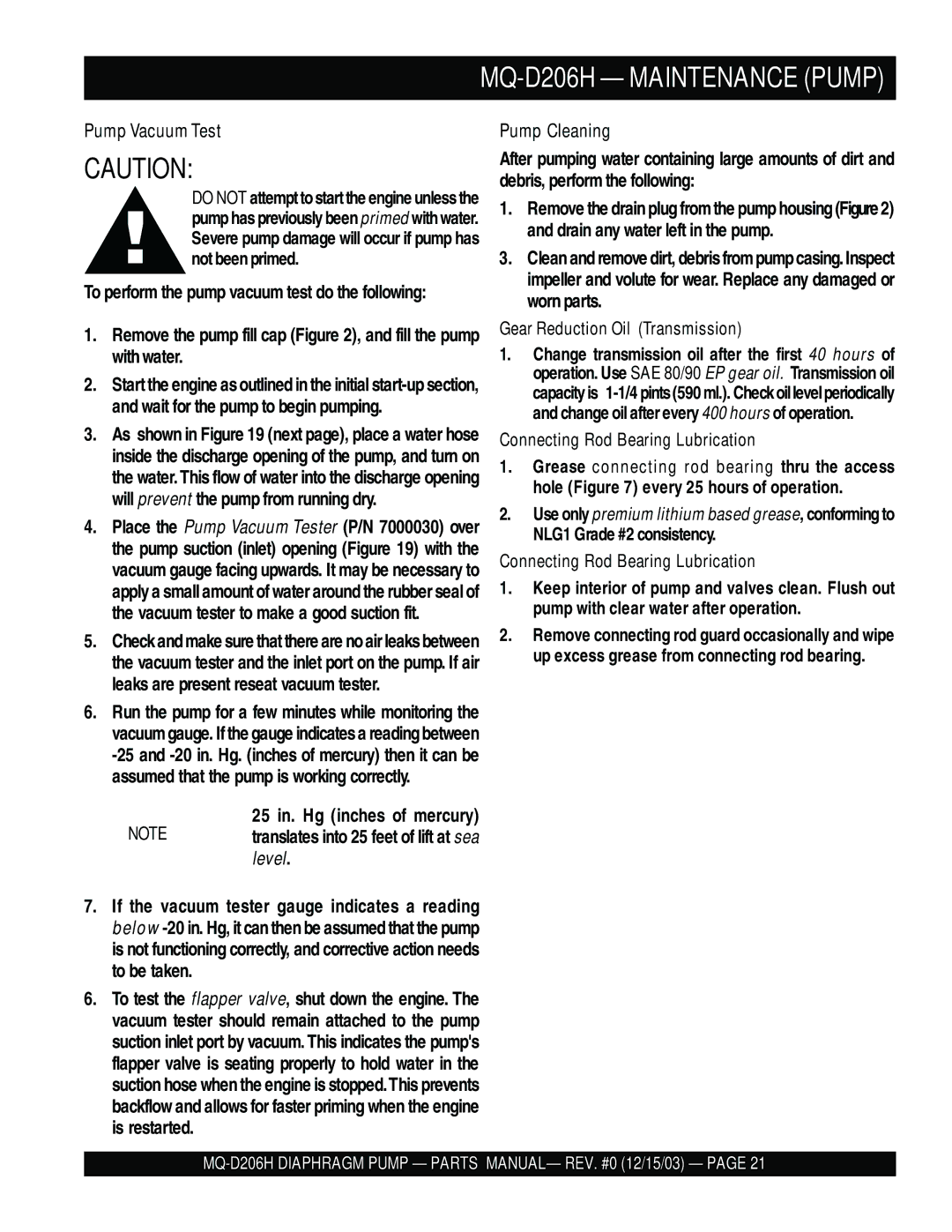MQ- D206H specifications
The Multiquip MQ-D206H is a cutting-edge, high-performance diesel engine generator designed to provide reliable power for a variety of applications, including construction sites, outdoor events, and emergency power needs. This generator stands out in the market due to its robust design, advanced features, and high efficiency, making it a preferred choice among professionals in various industries.One of the key features of the MQ-D206H is its powerful and durable 206cc diesel engine. This engine is engineered to deliver consistent power output while maintaining excellent fuel efficiency, allowing users to operate the generator for extended periods without the need for frequent refueling. The MQ-D206H is capable of producing up to 6,000 watts of continuous power, making it suitable for running multiple tools and equipment simultaneously.
The generator is equipped with a large fuel tank that offers extended runtime, ensuring that users can rely on it during long working hours without interruptions. Its compact and portable design, complemented by durable wheels and a sturdy frame, allows for easy transportation and setup in various locations. This portability makes it an ideal choice for both stationary use and on-the-go power requirements.
In terms of technology, the Multiquip MQ-D206H features advanced noise reduction technologies, making it one of the quieter generators in its class. The built-in sound attenuated enclosure significantly reduces operational noise, helping to maintain a quieter environment in residential areas or during outdoor events.
Moreover, the MQ-D206H includes innovative safety features such as low oil shutoff and over-current protection, which help safeguard the engine and connected equipment from damage. The user-friendly control panel offers easy access to essential functions, including voltage selection and circuit breakers, allowing for a straightforward operation.
Construction professionals and event organizers will appreciate the high-quality electrical components within the MQ-D206H, which are designed to deliver clean and stable power, ensuring that sensitive electronic devices are protected from voltage surges.
In summary, the Multiquip MQ-D206H is a reliable and versatile diesel generator that excels in performance, fuel efficiency, and portability. With its advanced features and rugged design, it caters to a wide range of power needs, making it an indispensable tool for both professional and recreational users.

